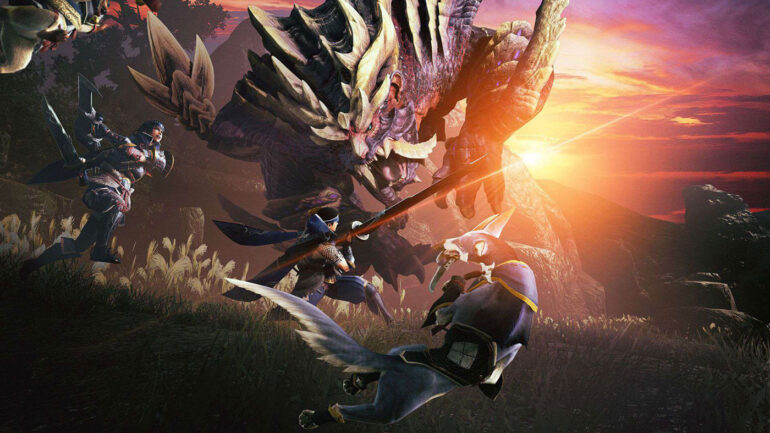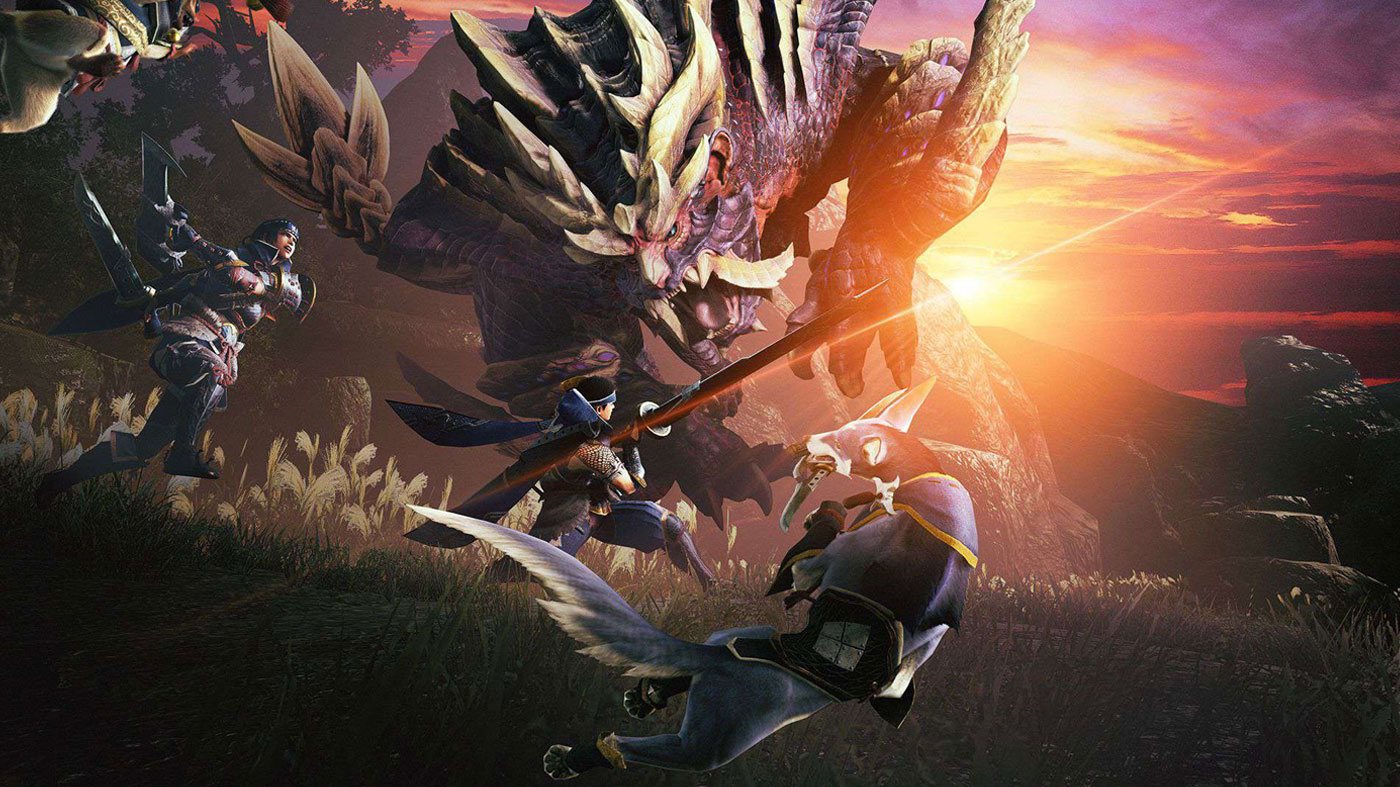Back when I reviewed Monster Hunter World: Iceborne in 2019, I stated that it constantly found ways to surprise and entertain me well past the hundreds of hours I’d already put into the base game. Since then, CAPCOM have added numerous monsters and crossovers via free updates, from fan favorites like Alatreon and Fatalis to dangerous newcomers like Safi’Jiiva. It kept World feeling alive and fresh for the better part of its 3-year life span, and as it comes to an end, Monster Hunter Rise is stepping in to take the reins. Built exclusively for the Nintendo Switch on the RE Engine, Rise is a seamless meld of new and old Monster Hunter, maintaining all of the quality of life changes that came with World, while infusing the experience with nostalgia and new systems that just make sense within the meticulously polished foundations of its gameplay.
Where Monster Hunter Rise differentiates most from any of its predecessors, is in its setting of Kamura Village and surrounding locales. It’s clear that it takes inspiration from feudal Japan in more ways than one from the design of the village itself to the Kurosawa-like introductions of its whopping 28 different monsters. Much like World, there’s an exceptional amount on environmental storytelling on showcase here, giving the game a distinct sense of place among the franchise. Where it separates itself from World, though, is in the way it tells its narrative.
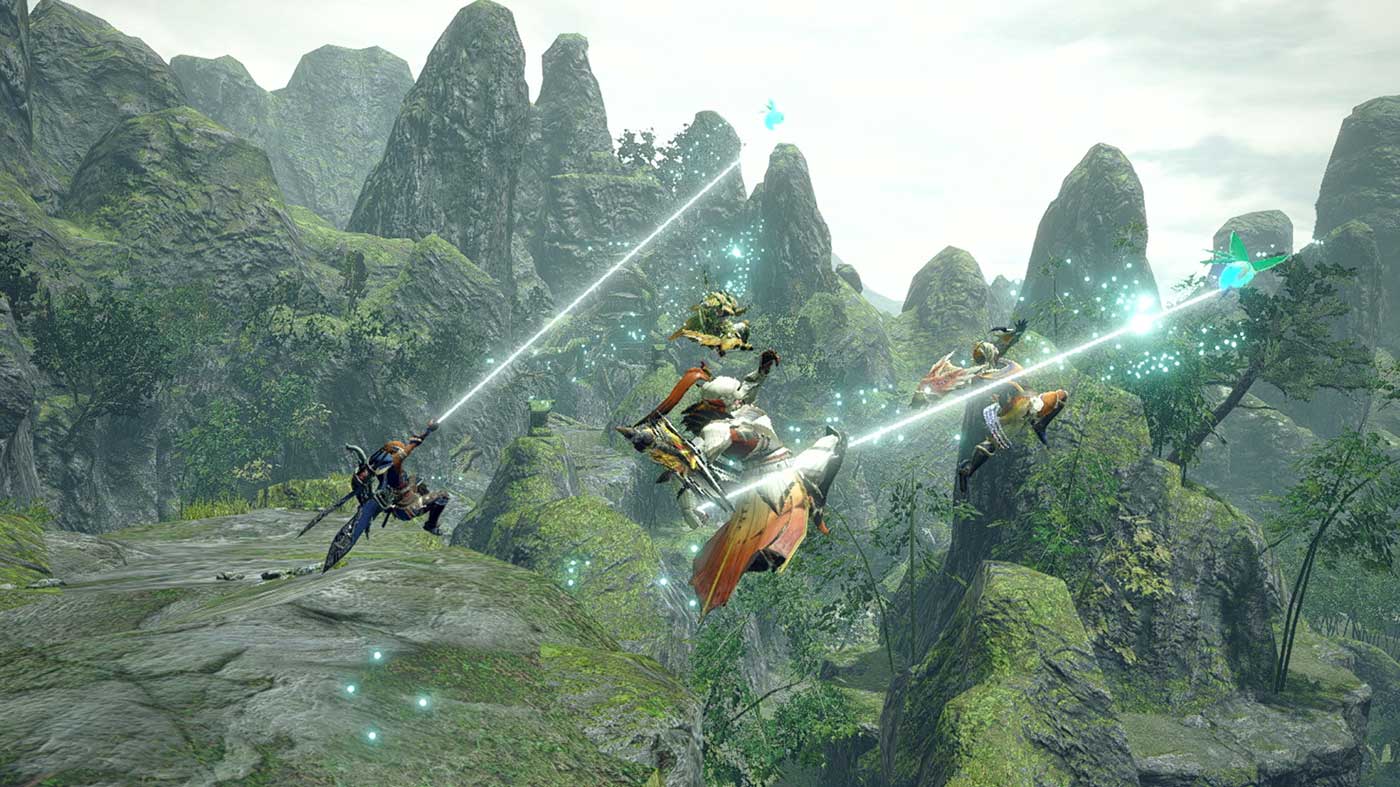
Much like older MH games, Rise splits its quests in two, offering single-player Village quests, and multiplayer Hub quests. I was shocked to have the credits roll after only around 8 or so hours with Village quests, only to find out it continues much deeper into the hub quests. It’s a typical Monster Hunter plot, which isn’t necessarily a bad thing, but it does feel somewhat unfinished and left me wanting a little bit more than the roughly 30 hours I’d spent with it, but that will no doubt come with future content. It has a much stronger focus on its core cast of characters, which puts more weight behind the main conflict Kamura has to deal with. I enjoyed it overall, but I don’t think its quite as sharp as some of the recent entries in the series, although I do expect that to change as more content is released.
Progression wise, having the main narrative split between Village and Hub quests is a genius idea for a few different reasons. First of all, the Village quests are significantly easier than that of the Hub quests, making it an ideal place for newcomers to get a grasp on how to hunt and learn the ins and outs of different weapon types. While series veterans might find the opening hours comparatively easy to other entries, the License Test quests that unlock as you progress through Village essentially skip the early Hub quests means you can jump straight into High-Rank hunts after finishing the Village portion. This means that there’s no repeat hunts when progressing through Hub, unless you really want to do them, cutting out a lot of the monotony and needless longevity that came with the Village/Hub system in previous entries.
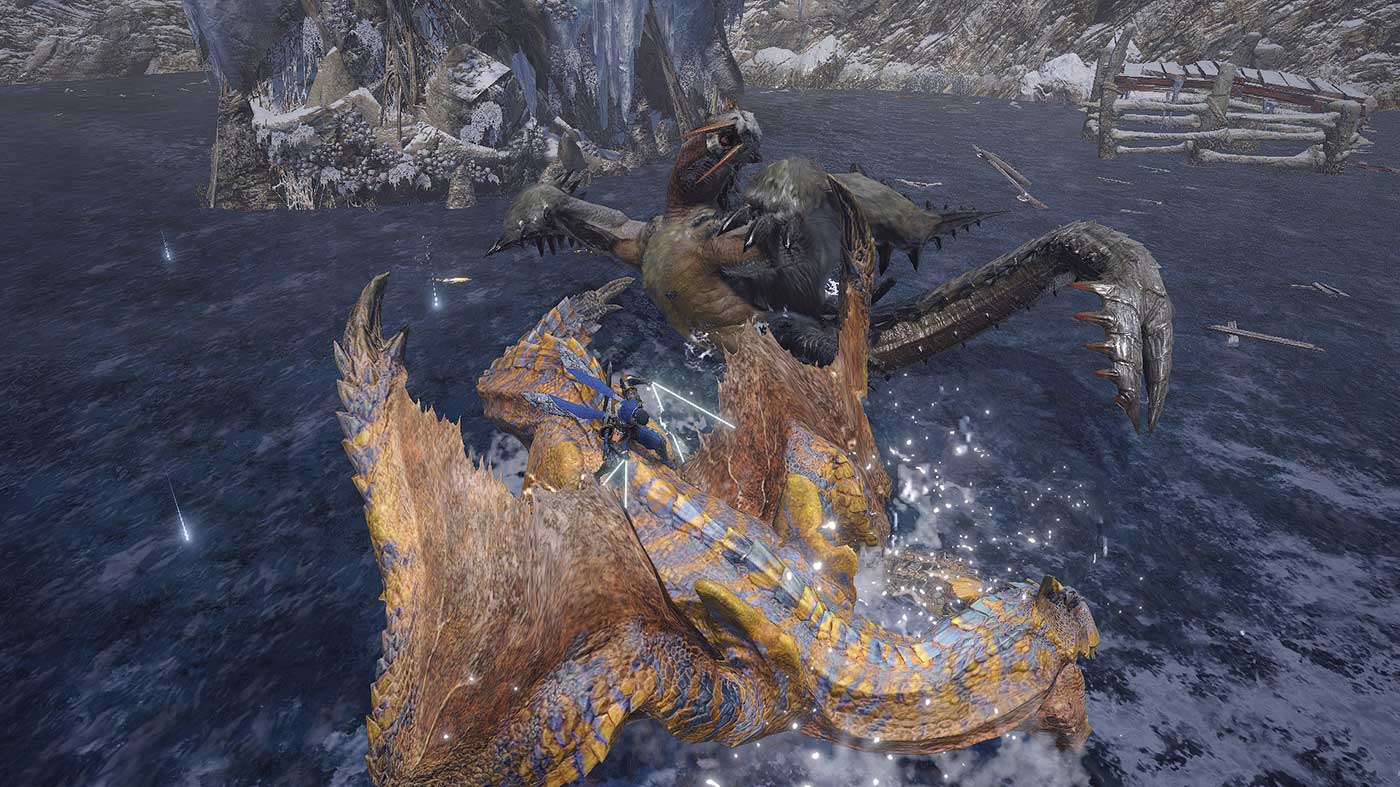
Gameplay is where Monster Hunter Rise really flexes its muscles on World and Iceborne in ways that incorporate systems from older games to create something new and customizable. Each of the 14 weapon types still feel very distinct from one-another, offering vastly different gameplay experiences and that’s before we begin to discuss Rise’s flagship feature: the Wirebug. The Wirebug is an insect that uses silken strands as a means for traversal and new combat features while in the field. Each weapon has at least two Wirebug attacks that consume Wirebug charges, each attack dealing Silk-Bind damage to whatever monster you’re fighting. Each attack has a risk-reward element to it, incentivizing smart use, whilst also encouraging you to use them as often as possible. They become a core part of each weapons move set because Wirebug charges usually fill back up pretty quick. Dealing enough Silk-Bind damage allows you to mount that monster, either leading to a topple, or using it to rain down hell on another monster. It’s thrilling stuff that never feels necessary to completing hunts but adds another wrinkle onto an already fantastic combat loop.
If that isn’t enough to get you onboard, then Switch-Skills will certainly seal the deal. Each weapon has certain moves or abilities that can be altered via the Switch-Skill system, skills that you unlock for each weapon as you play that change the way the behave. This system is less about having a de-facto way to use a weapon, and more about customizing a move set to fit your play style or role in a hunt. The Hunting Horn, for example, can change its overhead smash to a side slap that leads into a sonic boom, trading-off stamina reduction for more stun damage which eventually leads to a knockout. Each weapon has 4 different Switch-Skills that you can unlock at your own pace, but it’s a system that works exceptionally well to get you try builds or weapons you typically wouldn’t.
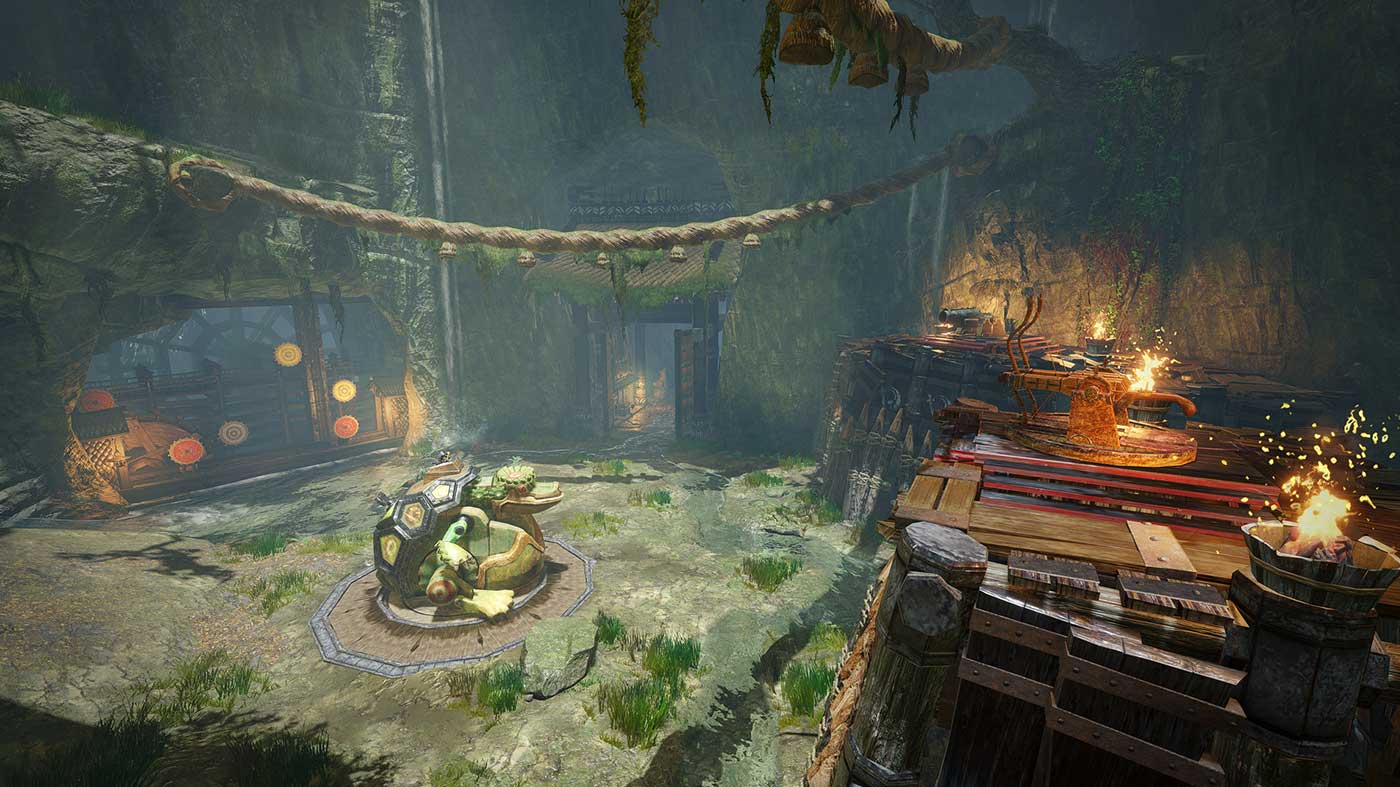
The Wirebug can also be used for traversal and exploration which is a larger part of Monster Hunter Rise than you might initially think. Each of the four main locales are extremely vertical and vast, making the Wirebug an effective tool for getting to hard-to-reach places. This is handy because Rise’s areas are full of Endemic Life; insects and animals within the ecosystem that give you buffs or items to use for the rest of that quest. The new companion type, the Palamute is also handy in this regard. Palamute’s can be mounted and used as means to quickly cross terrain, while also serving as a combat buddy in hunts. Just like Palicoes, they’re very customizable and you can tweak their combat style and behavior before you go into a hunt.
Arguably the most important part of a brand-new Monster Hunter game, is of course, the roster of monsters, both new and old. As mentioned previously, Rise sports a massive 28-monster roster at launch. While plenty of fan favourites like Arzuros, Mizutsune, and Rajang make a comeback here, it’s the new monsters that steal the limelight. Whether it be the malicious Magnamalo or the icy Goss Harag, each new beast has a striking visual design and unique gameplay elements that make each and every one fun to fight. A special mention has to go out to the last few hunts in the Hub, without spoiling too much, they have an immense sense of scale and scope to them that really sells the stakes and power of these particular threats. The armor and weapon design is once again fantastic, and theory-crafting all the different kinds of builds I can make has been some of the most fun I’ve had with the game so far.
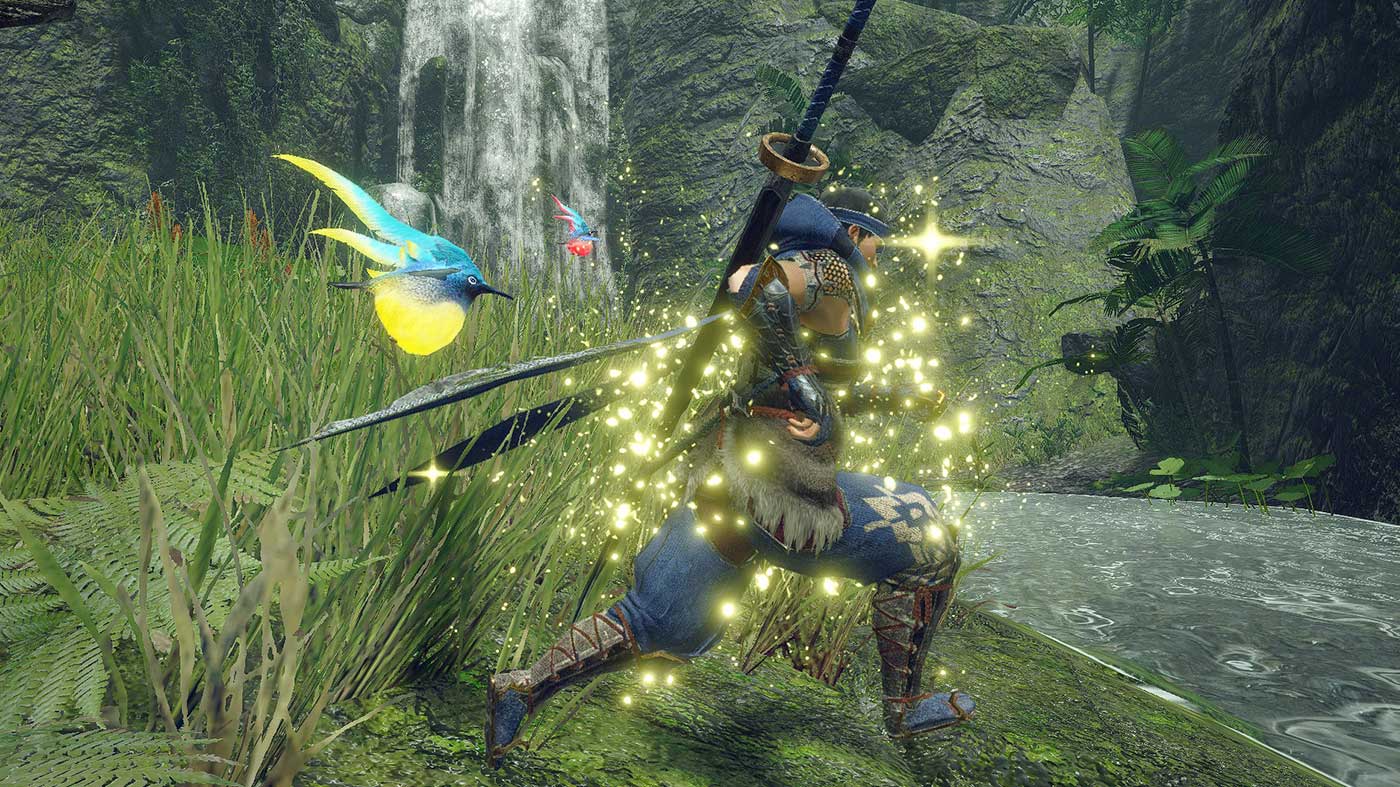
Lastly, is the horde mode introduced in Monster Hunter Rise, aptly named the Rampage. As one of the core conflicts in the narrative, The Rampage is a stampede of monsters that are trying to break into Kamura Village and lay waste to its inhabitants, and you’re the first line of defense. Rampages see you placing down defenses like automated cannons and ballistae to hold back the onslaught of monsters. While the first few are slow paced, it quickly becomes a killer combination of tower defense and classic Monster Hunter combat, as you zip around the around erecting new defenses and making uses of super weapons like the Dragonator or Wyvern shot. All Rampages come to head with a huge monster leading the charge, or in some cases, an Apex version of another monster, which offer a good deal of challenge, and are especially fun to take on in a multiplayer setting.
From a technical standpoint, Rise is largely a success with some blemishes making themselves known here and there. The game runs smoothly and looks great on the Switch, it’s not on the same level as World, but what’s been achieved here with the RE Engine deserves to be applauded. The Rampage quests in particular run near-flawlessly, which is a feat in and of itself given how much there is going on at any one time. What’s odd, though, is the certain areas can cause rampant frame drops that often hover around the mid-10s. I’m not 100% sure what causes this, but it happens most in the Flooded Forest locale. Given its only one of four areas you don’t see it very often, but it can be frustrating nonetheless when some of these fights are so fast-paced and reliant on reaction times.


